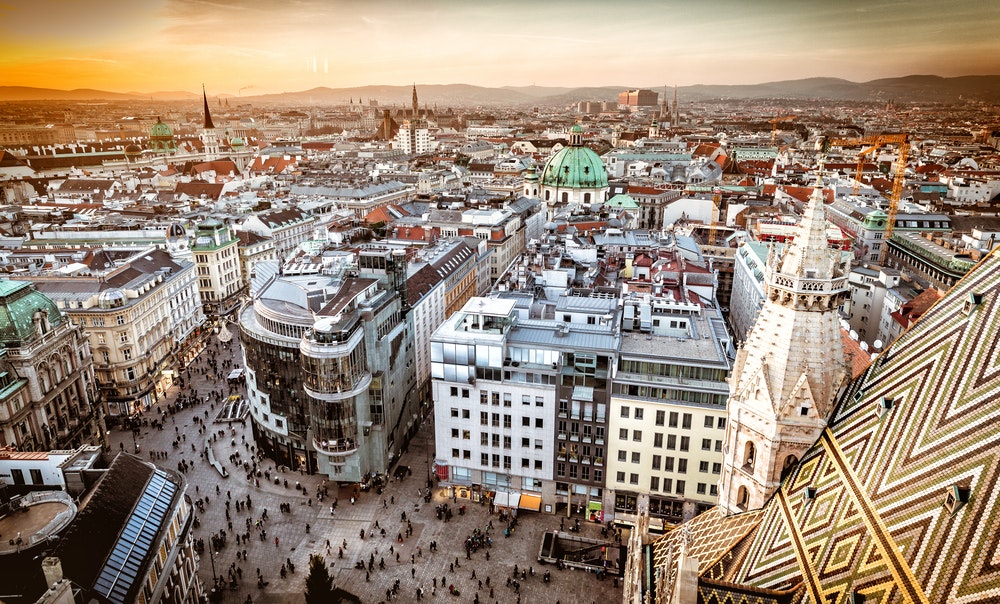For as long as civilisations have existed, humans have mapped their surroundings. The earliest surviving example is the Babylonian Map of the World, a broken stone tablet dating from around 600 BC, depicting the course of the Euphrates. Maps have been integral to human progress. They have helped explorers and allowed for the development of trade and diplomacy.
Modern society is just as reliant on maps, albeit of a different kind. Global positioning systems are part of everyday life and, in normal times at least, help to guide millions of people and vehicles down roads and pavements every day.
All maps, from the ancient to the modern, have something in common. They are representations of the external world, of towns, roads and the natural world. But now, specialist companies are beginning to develop maps of a sort that have never existed before. They are creating digital maps of the indoor world.
The idea of indoor mapping may sound counterintuitive, but the increasing complexity of large public spaces, such as shopping centres and airports, has made maps like these very significant, especially during the present pandemic.
Consider hospitals, for example. They’re huge, with departments spread out across an array of different buildings, connected by long, often featureless corridors. Their sheer scale can pose serious problems. In 2015 a team from the University of Nottingham and the Liverpool School of Tropical Medicine interviewed junior doctors at a number of training hospitals. All of the respondents admitted to getting lost on their way to emergency calls.
Living Map, a firm based in Bath, decided to confront this problem, and last year created a map of the city’s main hospital, the RUH, along with its surroundings. The hospital’s intensive care facility was expanding at the time due to increased pressure from Covid, and the RUH was taking on new staff. It was crucial that those new personnel knew exactly where they were at all times. With acute respiratory diseases such as Covid, any delay in treatment can have serious consequences.
Dominic Hazlehurst, the CEO of Living Map said the initial idea was “part of the response to the initial pandemic wave.” The aim was to help new hospital staff to use the right entry and exit points, leave their bikes in the right place and find their way around town.
“The hospital themselves have control over the information on the map,” he said, which is an important ability especially during Covid, when the rules are constantly changing. “It’s far quicker to display new instructions on a digital map than to go round a hospital changing all the signs.”
That map helped medical staff, patients and visitors. Maps like this are also useful for hospital administrators who oversee buildings filled with large, expensive bits of equipment that are often on wheels. The ability to track it all not only makes hospitals work better, but it also saves money. The more efficiently hospitals can use equipment the less of it they need, which in turn reduces spending on equipment.
Indoor maps are part of what is now called the Geospatial Industry, which includes not only Google, but firms developing drone technology and autonomous vehicles. In 2019, the sector was valued at $58.3bn and by 2027 it’s projected to reach $158bn — a growth rate of 14 per cent. It’s a buoyant estimate, but then the industry’s products can be used in the management of any large, complicated interior space, making the potential market practically limitless.
Living Map’s client list reflects that breadth. It has already mapped both the Metropolitan Museum in New York City and Canary Wharf, in London. People can view the information on interactive kiosks or download an app, type in their destination, and follow the directions. Airlines are also taking an interest. Star Alliance, for example, the world’s largest airline group, has just done a deal with the company to create a digital tool that will help to guide passengers through every major airport in the world. Travellers can now see where they are, where they need to go and how long it will take to get there.
That’s useful for people dragging their luggage around a busy, unfamiliar airport. It also helps staff at the departure gates, who get a picture of how far their passengers are from the gate. They can now marshal large crowds as efficiently as possible — especially important during a pandemic.
Covid will pass, and when people flood out of their homes and back onto the high street, the potential for indoor mapping will be of particular significance for the recovering retail sector. People’s attitude to shopping is undergoing a fundamental shift. Large department stores such as Debenhams and Top Shop are giving way to online retailers like Boohoo. As that transformation occurs, the physical high street will take on a new character, where department stores effectively become showrooms for online retail companies. It’s easy to see how interactive maps could become a guide to that emerging, more digitised high street. Living Map is already talking to councils about designing tools to help people move safely around town centres.
Transformations of this kind are not new. Norman Foster, the architect, pointed out in a recent article for the Guardian that disasters have always preceded changes in our built environment: the Great Fire of London in 1666 led to the use of fireproof bricks and cholera outbreaks in the 19th Century led to the construction of the London Embankment. The TB epidemic led to the creation of public parks, just as the killer smog of 1952 meant Britain switched from coal to gas. It’s Foster’s contention that all of those changes would have occurred anyway, but that each was spurred on by crisis.
The Covid pandemic is also hastening changes already under way, in how we shop, and how we live and work. Advances in technology have been driving an increase in remote working for some time and lockdown has accelerated that rate of change.
And when the pandemic recedes, it’s easy to see how that new cohort of remote workers, no longer commuters, will instead become occasional visitors to multiple business districts. They, like everyone else emerging from the pandemic, will need a guide to those large, often complicated, public spaces. After all, it’s a while since we’ve been out there.


